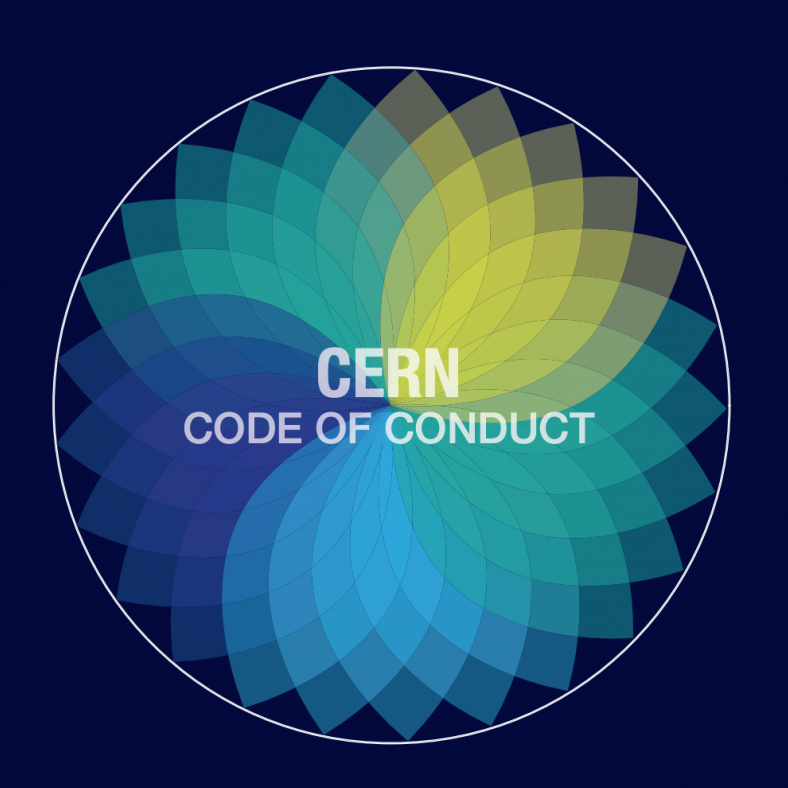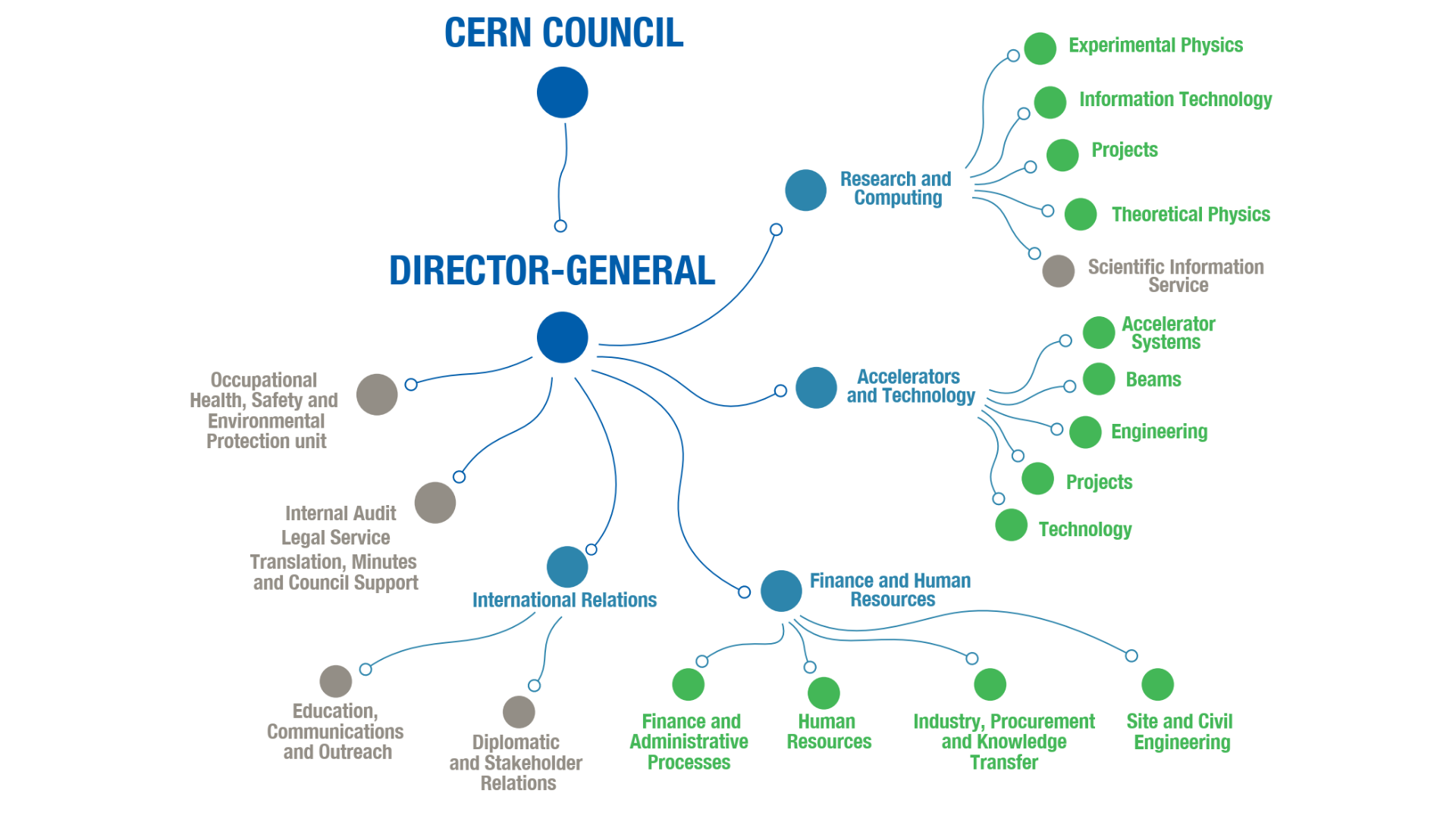About CERN
CERN Environment Report 2021-2022
Founded in 1954, the European Organization for Nuclear Research, CERN, is the world’s leading laboratory for particle physics. Its mission is fundamental physics, finding out what the Universe is made of and how it works.
A worldwide lab
CERN is an intergovernmental organisation headquartered in Meyrin, in the Canton of Geneva, Switzerland, and has two main campuses: the original Meyrin site, which straddles the French-Swiss border, and the Prévessin site in France. It also has several smaller sites in both countries, located around the Large Hadron Collider (LHC) and the Super Proton Synchrotron (SPS).
Cooperation between nations, universities and scientists is the driving force behind CERN’s research. More than 16 000 people from around the world work together at CERN to push back the frontiers of science and technology. Among them, just over 3500 employed members of the CERN personnel take part in the design, construction and operation of the research infrastructure. They also contribute to the preparation and operation of the experiments, as well as to the analysis of the data gathered for the vast community of users, which comprises over 12 000 scientists from institutes in more than 82 countries.
Discovery machines
CERN provides a unique range of particle-accelerator facilities that enable research at the forefront of human knowledge. The flagship facility, the LHC, is the world's largest and most powerful particle accelerator. It collides beams of protons or heavy ions, and the results of these collisions are recorded by several particle detectors. The LHC’s evolution will culminate with the High-Luminosity LHC (HL-LHC), which will run from 2029 to 2041.
Lead times for new facilities in particle physics are long, and although the LHC will run until 2041, planning for a successor has already begun. The current front-runner, which has been identified through the European Strategy for Particle Physics, is a large circular machine with a circumference of about 91 km. The CERN Council has mandated CERN to carry out a feasibility study for this future circular collider (FCC), and this study is ongoing. The study team will report on the financial, environmental, geological and technological feasibility of the FCC in 2025 (see In focus). In parallel, R&D is under way on a range of other potential future facilities that could carry CERN research through to the end of the 21st century. To develop new research tools, CERN is pushing several technologies, including superconductivity, vacuum, computing and electronics, to their limits. In the long term, these innovations could benefit society as a whole (see Knowledge and technology for the environment).

INSPIRING AND EDUCATING NEW GENERATIONS
The science and technology underpinning CERN’s research have great potential to inspire students to pursue careers in science and engineering, as well as to enthuse and engage citizens of all ages in the wonders of science and its impact on our daily lives. The Laboratory is a much-favoured visitor destination, with around 150 000 visitors from 95 countries (2019) taking part in guided tours every year.
Education is a pillar of CERN’s mission. The Science Gateway, due to open in 2023, will be an emblematic education and outreach facility. The various initiatives to inspire and educate students of all ages include the Summer Student programme for undergraduates, the Beamline for Schools competition for high-school students and the Be a Scientist programme for primary schoolchildren. The Organization also runs programmes for high-school teachers.

ETHICS AND INTEGRITY
CERN is committed to pursuing its mission of research, innovation, training and collaboration while respecting the highest ethical standards of behaviour. The CERN Staff Rules and Regulations are the overarching framework that defines the roles and responsibilities of the Organization and its personnel. In addition, the Organization has a full-time ombudsperson and a Diversity & Inclusion Programme.
The CERN Code of Conduct builds on CERN’s values, namely integrity, commitment, professionalism, creativity and diversity. It provides common basic standards of behaviour to help its staff understand how to conduct themselves and treat others and how they can expect to be treated. It applies to everyone on the CERN site, whether personnel or visitors. This is part of a comprehensive framework that underpins the Organization’s duty of care and is complemented by relevant bodies and structures designed to ensure the wellbeing of all personnel and provide them with the support they need. This framework covers employment-related rights, safety at CERN and institutional due diligence.
A sustainable research environment
CERN strives to be a role model for environmentally responsible research. To this end, an awareness campaign to inform personnel of the actions taken across key environmental themes was launched in June 2021. This campaign closed with a general meeting in September 2022 that included presentations from Department Heads and was designed to ensure that everyone working at CERN had the opportunity to familiarise themselves with the Organization’s environmental goals and learn how they can contribute to achieving them. In October 2022, CEPS (CERN Environmental Protection Steering board) organised a two-day workshop on CERN and the Environment. This went into more depth than the general meeting, featuring dedicated sessions on energy, the status of research on environmentally friendly coolants and detector gases, water, the local environment, mobility, travel, food and procurement.
The science and work carried out at CERN have an impact across many of the United Nations Sustainable Development goals (SDGs). Five have been identified as particularly relevant for the Laboratory: good health and well-being (3); high-quality education (4); industry, innovation and infrastructure (9); peace, justice and strong institutions (16); and partnerships for the goals (17). The Organization strives to contribute actively towards their implementation. In addition, CERN’s aim to limit its impact on the environment is aligned with other SDGs (see GRI content index).

CERN is a member of the European Intergovernmental Research Organisation forum (EIROForum), which brings together eight of Europe’s largest research organisations. In October 2021, together with key leaders and researchers from major US and European science laboratories, including the other EIROforum members, CERN took part in a videoconference ahead of the United Nations Framework Convention on Climate Change Conference of Parties (COP26). Sharing the same values and convinced that science performs best through collaboration, the participating institutes issued a joint press release, affirming their common commitment to uniting science towards a sustainable and resilient global society and economy.
In parallel, the EIROforum working group on environmental sustainability, created in 2020 and chaired by CERN, met twice per year in 2021 and 2022 to review the activities carried out by each member and to identify areas of common interest where synergies could be developed. The autumn 2022 meeting included a chance for the organisations to share their response to the energy crisis.
Ensuring that CERN’s knowledge and technologies reach society as a whole is enshrined in the Organization’s founding Convention, which states that: “the results of its experimental and theoretical work shall be published or otherwise made generally available”. In 2020, the Office of the High Commissioner for Human Rights (OHCHR), UNESCO, WHO and CERN published a joint appeal for Open Science, in which it was underlined that it is a human right and plays an important role in reaching SDGs.
Governance
CERN had 23 Member States, ten Associate Member States and six Observers as of the end of 2022. The Observer status of the Russian Federation and the Joint Institute for Nuclear Research (Dubna, Russia), were suspended by a CERN Council Resolution in March 2022. The CERN Council is the highest authority of the Organization and decides on CERN’s activities in scientific, technical and administrative matters. The Council is assisted by its five subordinate bodies, including the Scientific Policy Committee, Finance Committee, Audit Committee, Tripartite Employment Conditions Forum, and the Pension Fund Governing Board. The Member States appoint their own delegates and each state has a single vote, with most decisions requiring a simple majority.

Appointed by the Council, usually for five years, the CERN Director-General manages the Organization and reports directly to the Council. The Director-General is assisted by a Directorate composed of members proposed by the Director-General and appointed by the Council. In addition, CERN has an Enlarged Directorate, which consists of all the Directors and Department Heads.
CERN is committed to engagement with its personnel, whether they are employed by the Organization or come to the Laboratory to carry out their research. To this end, several mechanisms for engagement, feedback, support and reconciliation are in place, notably through the Staff Association, the ombudsperson, the Human Resources department and the Users Office, and dedicated bodies are in place to address specific concerns.
A GLOBAL COLLABORATION
CERN cooperates with a number of national and international scientific institutions and organisations and is represented on several scientific committees, such as the European Committee for Future Accelerators (ECFA) and the International Committee for Future Accelerators (ICFA). CERN also has Observer status at the United Nations General Assembly.
IN FOCUS
Luisa Ulrici is the deputy leader of CERN’s Environment group and was the link person for the "Mining the Future” competition.
— What was the context of this competition?
LU: The FCC feasibility study aims to establish the environmental sustainability of a future flagship research facility, in line with the recommendations of the European Strategy for Particle Physics 2020 update.
Constructing a new 91 km subsurface infrastructure that could provide exciting physics results until the end of the 21st century will generate considerable amounts of excavation material, mainly molasse. No reuse pathway on an industrial scale currently exists for this material, a heterogeneous sedimentary rock that is prevalent in the region. This is why the FCC collaboration, CERN and the University of Leoben, with the support of the EU-funded H2020 FCC Innovation Study project, launched the Mining the Future competition. This international competition aimed to identify credible technologies and processes that could be brought to market by the time a new infrastructure is built.
— The competition results were announced in a ceremony on 27 September 2022. What was the outcome?
LU: We received 12 very interesting applications, from which four excellent proposals were shortlisted. The winner was selected based on four evaluation criteria: technical feasibility, economic viability, social value and project relevance.
A consortium led by BG Ingénieurs Conseils presented the winning proposal, “Molasses is the new ore”, an innovative way to apply a near real-time flow analysis already used in cement plants to separate excavated material for further processing on site. The winning consortium received an award designed to support its further R&D to bring the technology to maturity.
Learn more
Questions regarding this report may be addressed to environment.report@cern.ch.
